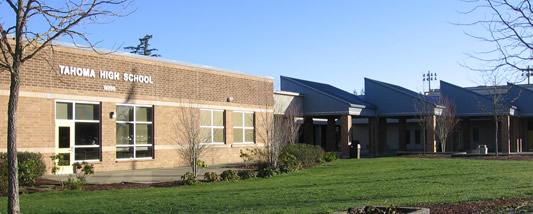Scant DNR Dollars Cloud K-12 Budget Plans
Experts: Quality school buildings, regularly maintained, are essential to student learning
Student performance and test scores increase up to 10.9 % when learning conditions/good school buildings are utilized.
Multi-state research proves the obvious: students learn more, score higher on standardized tests, and feel more motivated when their classrooms are clean, comfortable and well-equipped, according to David C. Thompson, ed. leadership chair at Kansas State University & other researchers.
“One 1993 D.C. study found that when school buildings were improved significantly, average student-achievement test scores at those schools climbed by 10.9 percent.”
The bottom line: Good schools are an essential component in student learning because kids and teachers perform better in high quality, clean, and up to date learning environments!
But the DNR mandate clouds this bottom line and educational fiscal planning and operations with shrinking, inconsistent contributions.

The DNR mandate hurts education because:
- School district planners can no longer count on serious revenue from the DNR Common School Construction Fund
- The DNR’s share of K-12 costs have crashed from more than 60% of school construction costs in the 1980s to just 25% since 2002, according to OSPI because of volatile lumber markets, our population explosion, and harvest-impinging environmental regulations.
- It clouds educational fiscal planning and operations with uncertain dollar amounts and delays
- It requires school districts to wait for over a year before DNR contributions are available
- Shrinking DNR contributions have helped accelerate the dangerous rise of toweringly high capital bond votes across the state. These frequently fail and students suffer by being packed into old schools, classrooms, and portables like sardines in a can.

Disappearing DNR Dollars Leaves Schools Unbuilt and Kids Packed into Portables
Kent School District Portables, Kent WA
Replacement bond votes fail, schools go unbuilt, and children are packed into schools, classrooms, and portables like sardines, especially in low-income districts, like the Highline School District and many others, where students of color suffer the worst effects of the failed mandate.
After Highline failed to pass to capital bond votes, then Superintendent Susan Enfield stated: “Our job now is to find a solution to our overcrowding that is least harmful to our students … we will have to consider portables on play fields, double-shifting, and busing students out of their neighborhoods.”
These effects lead to the unconstitutional inequities that are at the heart of the McCleary decision – that the state has failed to provide ample and equal learning opportunities for all of its children – our “paramount duty.”
Study: School Design, Classroom Layout Can Heavily Affect Student Grades, Learning
The ever-unpopular, make-shift solution to unhoused students? Portables.
Every day, over 100,000 students are relegated to “portable” classrooms in school parking lots across the state.
In 2012, the Seattle School District reported that 5,000 students — 10 percent of the student population — sat in portables, and others studied in gyms and hallways. The National Education Association ranks Washington 43rd in class size averages, in part because of unavailable school construction money.
This problem will increase, dramatically, with the new K-3 classroom size reduction initiative. Keeping the DNR in the equation does not help the situation – it hinders and clouds budget forecasting in the already hazy, broken funding process for new schools.
Would you want your son or daughter learning in one of these?

Old Portables
For “Educable Mentally Impaired”
SOLD! Used Portable Classroom
The DNR mandate fails any reasonable cost/benefit test
This revenue-driven policy imperils our state’s majestic forests, wildlife, and sacred salmon rivers, yet in return it provides scant cash for school construction.
In 2014 for instance, DNR timber sales contributed a typical, minuscule $120 million to Washington’s $7.6 billion K-12 budget.
$120 million barely buys one new 4A high school. For the entire state! A drop in the bucket.

Tahoma High School, Covington, WA
Options For Replacing Lost DNR Dollars:
Note: The DNR contributes an average of only $120-$200 million per year, an amount that can be manageably covered within WA’s multi-billion dollar budget.
- Raise revenue:
- A new state tax on capital gains could raise about $700 million per year in new resources.
- Legislators could extend tax increases passed in 2010 that are set to expire, generating $630 million in the next budget cycle.
- Legislators could pass an education dedicated income tax
- Legislators could pass an education-dedicated 1 % increase in corporate B & O taxes
- Legislators could redirect corporate tax breaks to our schools
- Include compensatory revenue in the McCleary rewrite of the state K-12 budget.
- See the full McCleary decision here.
- See McCleary funding requirements/background here.

Garfield High School, Seattle, WA